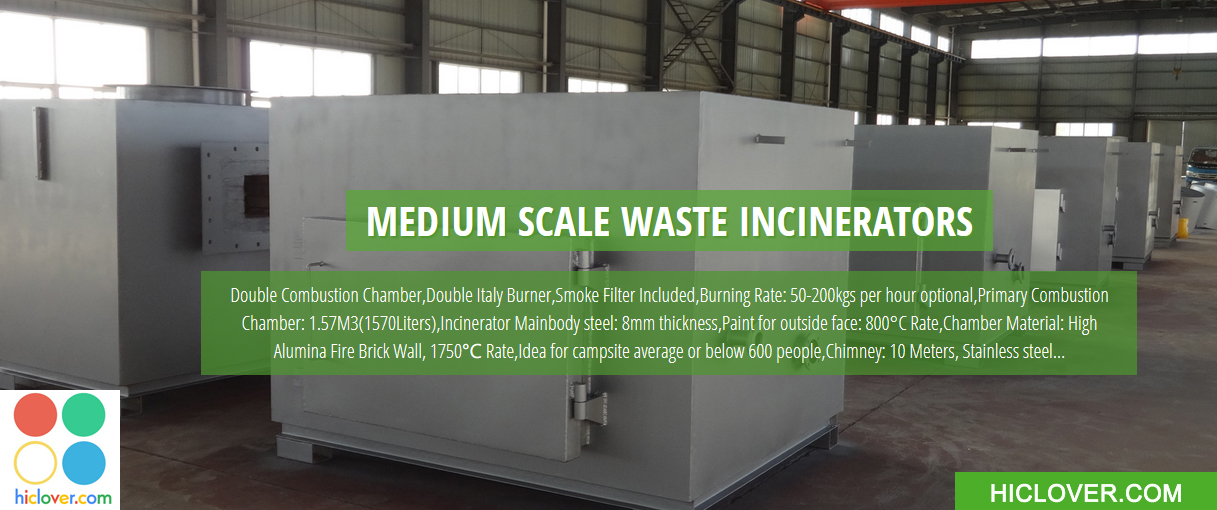Medical waste incinerators are crucial for managing and disposing of hazardous waste generated by healthcare facilities, particularly in Uganda, where there is a growing need for safe and efficient waste management solutions. According to recent information, Uganda has been making strides in the implementation and use of medical waste incinerators to address the waste management challenges within its healthcare sector. Government and Private Sector Initiatives: The government of Uganda, in collaboration with private organizations, has been actively working on initiatives to improve healthcare waste management. For instance, the construction of a multi-billion modern incinerator for Northern Uganda in Gulu district has commenced, which will significantly enhance the region’s capacity to safely dispose of medical waste. Importance of Incineration for Medical Waste: Incineration is recognized as a critical method for the complete destruction and neutralization of hazardous medical waste. It eliminates pathogens, including hard-to-kill bacteria, breaks down and neutralizes organic, hazardous chemicals, and dramatically reduces landfill waste. Specific Incinerator Models Available: There are various incinerator models available for Uganda, catering to different healthcare facility needs and waste types. Regulatory Context: The use of incinerators for medical waste in Uganda is regulated, with specific guidelines in place to ensure safe and environmentally sound management. In Kampala, there is a local law that makes it illegal to use incinerators for all wastes apart from medical waste. This regulation aims to prevent the harmful emissions and environmental impacts associated with burning general waste. Challenges and Future Prospects: Despite the efforts to improve waste management in Uganda, there are still challenges to overcome. For instance, many hospitals in Uganda have been reported to burn infectious waste in shallow open pits, leading to toxic emissions that affect people’s health. However, with the implementation of modern incinerators and increased awareness about proper waste management practices, Uganda is moving towards a safer and more sustainable healthcare waste management system. In conclusion, the use of medical waste incinerators in Uganda is vital for the safe and efficient disposal of hazardous waste generated by healthcare facilities. With ongoing efforts and investments in modern incineration technology, Uganda is on a path to improving its healthcare waste management practices and reducing the environmental and health impacts associated with improper waste disposal. visit www.hiclover.com or contact us via WhatsApp at +86-13813931455.
Recent Posts
- Steel Mesh 2.0M Height*20Meter Length
- Madagascar’s Medical Waste Problem: How Local Incinerator Manufacturers are Working to Solve the Crisis
- Model: TS500, Medical Waste Incinerator 500-600kgs per hour capacity
- Manual Hydraulic Truck 2Ton Capacity
- Incinerator for Area health Centres
- G10LC Riello Oil Burner
- Waste Not, Want Not: Cities Implement New Recycling Programs to Reduce Trash
- Model YD30 Waste Incinerator 30-50 kg/hour
- Riello Burner G20 Difuser
- 150Liters-Vertical Pressure Steam Sterilizer-Autoclave-Digital Display Automation
- Top loading door waste incinerator
- Wet Scrubber(Spray Tower) and Defogging Tower for Waste Incinerators Model TS10
- Why use Medical Waste Incinerator?
- Incinerator Control Case
- Baltur BTL20 Burner HOLDER. NOZZLE(Spare Parts for Burner)
- The Dark Side of Healthcare: The Unseen Consequences of Hospital Waste
- Flushed with Concern: Hospitals’ Role in the Plastic Pollution Crisis
- Infectious Waste: The Dangers of Improperly Disposed Hospital Trash
- Why Waste Reduction is Key to a Sustainable Future
- Waste Incinerator Air Fan Centrifugal Fan DF5 550W 220V 850m3/hr.
- High Temperature Protection Masks for Incinerator Operation
- The Environmental Impact of Medical Waste: A Growing Problem
- Fuel filter Cup on oil tube for burner for waste incinerator
- Ignition electrode with 2 leads
- Medical waste incinerators in Kampala Uganda
- Solenoid baltur burner
- Bio Waste Recycling: A Step-by-Step Guide to Getting Started
- Riello Burner RL34 Difuser
- Thermal Radiation/High Temperature Apron/Incinerator PPE
- Temperature Thermometer for Incinerator Chamber
- Emergency push button on Incinerator Control Case
- High Aluminum Fire Brick
- The Hidden Epidemic: How Hospital Waste is Contributing to Climate Change
- Model: TS50, Medical Waste Incinerator 50-100kgs per hour capacity
- Medical Waste Disposal: A Guide for Healthcare Professionals
- Steel Base for Incinerator Model YD30
- Burner photo cell
- FIRE BRICK FOR INCINERATOR
- Incineration: The Double-Edged Sword of Waste Management
- The Economic Benefits of Bio Waste Management: A Business Perspective
- Waste Incinerator Air Fan Centrifugal Fan DF7 2200W 380V 3000m3/hr.
- Baltur BTL20 Burner WINDOW. FLAME(Spare Parts for Burner)
- Paws-itive Rememberance: The Rise of Pet Cremation in Modern Pet Care
- Safety Goggles
- Burner Baltur SPARK35W Oil
- Ashes to Ashes: The Evolution of Pet Cremation and Its Growing Popularity
- Riello RS34 Burner MBDLE412
- Fuel flexible pipe for burner oil line for burner
- Model TS50 Incinerator with wet scrubber system
- Manual Steel Oil Pump 25mm


Comments are closed